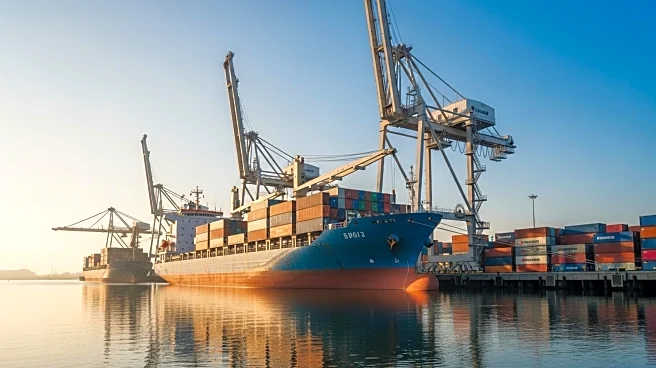What's Happening?
Libya is advancing its economic recovery efforts through the development of Sirte Port, a strategic infrastructure project aimed at revitalizing trade with neighboring countries. The port, which resumed operations in February after a 14-year closure due to regional conflict, is central to Libya's Vision 2030 plan. This initiative includes the construction of the 'SSS' highway, a $2 billion project linking Sirte to key southern cities and potentially forming a trade corridor with landlocked neighbors like Chad, Mali, and Niger. The project has garnered regional support, with involvement from companies in Egypt and the UAE. Additionally, the port is enhancing its facilities with the completion of a bitumen unloading platform and plans for a smart port system with Huawei's support.
Why It's Important?
The development of Sirte Port is crucial for Libya's economic revitalization, offering a pathway to increased trade and economic stability. By improving infrastructure and trade routes, Libya aims to strengthen its economic ties with neighboring countries, potentially boosting regional economic integration. The involvement of international companies underscores the strategic importance of the project and signals confidence in Libya's economic prospects. Successful implementation could lead to increased foreign investment and economic diversification, reducing Libya's reliance on oil exports. This development also reflects a broader trend of infrastructure investment as a means to stimulate economic growth in post-conflict regions.
What's Next?
As the Sirte Port project progresses, Libya is likely to see increased commercial activity and foreign investment. The completion of the 'SSS' highway will be a significant milestone, enhancing connectivity and trade opportunities. Continued regional support and collaboration with international companies will be essential for the project's success. The focus will also be on ensuring the security and stability necessary for sustained economic growth. Monitoring the project's impact on local communities and the broader economy will be crucial in assessing its long-term benefits.












